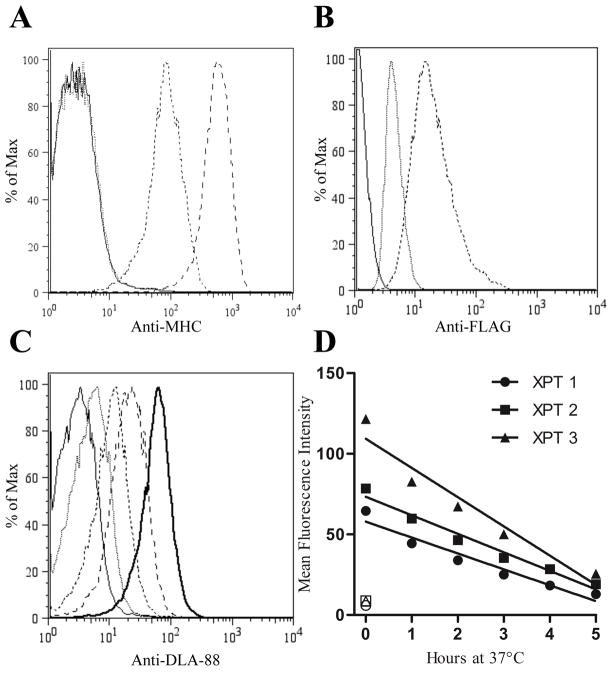Fig. 1.
When cultured at 27°C, RMA-S cells stably transfected with a FLAG-tagged DLA-88*50801 construct (BARC3) express the canine class I molecule at the cell surface, which can be specifically detected with H58A. (A) The endogenous murine alleles H2-Db or -Kb are not recognized by H58A. RMA-S cells cultured overnight at 27°C were stained with H58A (dotted line), anti-H2-Kb/d (long dashed line), anti-H2-Db (dashed line), or no primary Ab (solid line). The lack of staining of cold-cultured RMA-S cells with H58A was confirmed in multiple experiments. (B) The BARC3 clone expresses the DLA-88*50801 vector gene products. Following overnight incubation at 27°C, RMA-S (dotted) and BARC3 (dashed) cells were assessed for FLAG expression by intracellular staining with the mAb M2. The solid line shows unstained BARC3 cells. Data are representative of three independent experiments. (C) Surface DLA-88*50801expression produced by incubation at cold temperatures is gradually lost upon return to standard culture conditions. BARC3 cells were cultured overnight at 27°C, followed by an additional 5 (dashed line), 3 (long dashed line), or no (bold solid line) h incubation at 37°C prior to harvesting; for clarity, data from 1, 2, and 4 h collection points are not shown. The dotted line represents cells that were maintained at 37°C for the assay duration, while the solid line indicates control cells maintained at 27°C that were stained with the secondary Ab only. (D) Graphical representation of data from three independent experiments (XPT) performed as described in (C). Open symbols indicate control samples that were cultured at 37°C for the complete assay duration.

